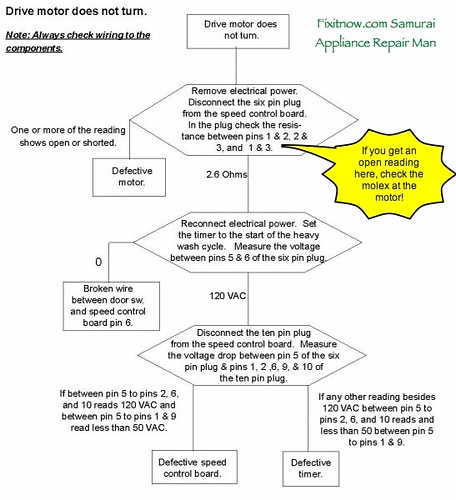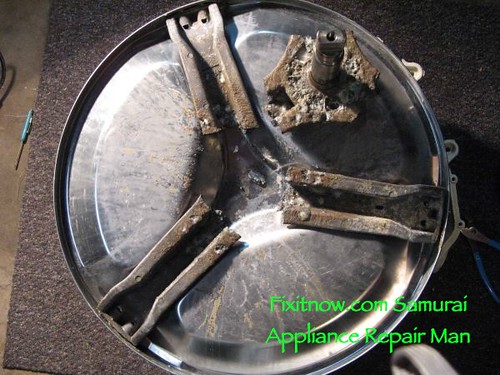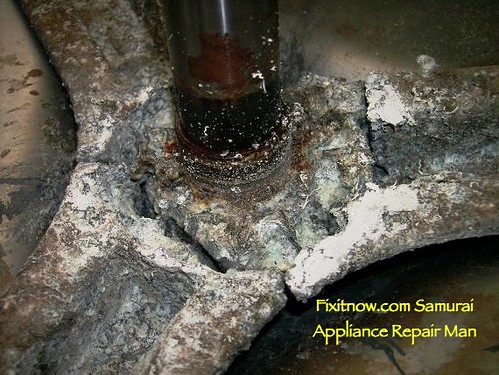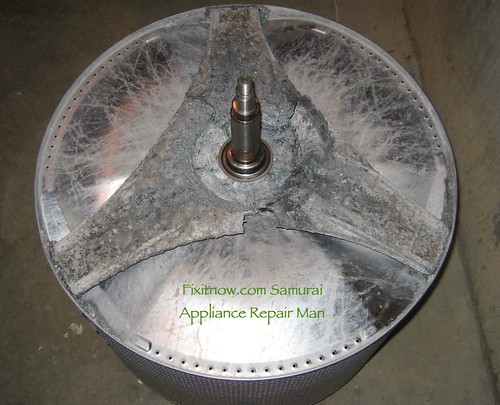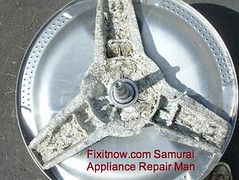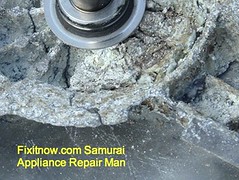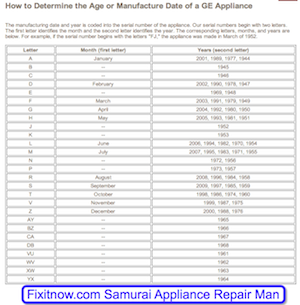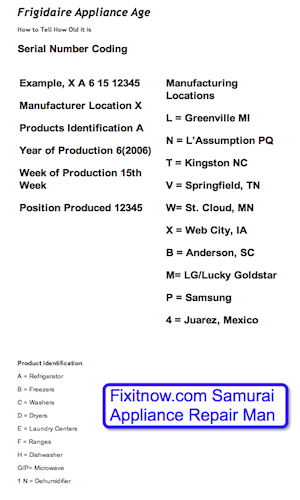Problem: Dryer warm but clothes take too long to dry.
Solution: Dryer is dirty with lint inside, vent is excessively long, or filled with lint. FIRE HAZARD!
Dryer disassembly help.
The house dryer vent line is notorious for being neglected and most people don’t even think about cleaning it out periodically. You’ll wanna clean that sucker out about every two to three years. There are services that specialize in dryer vent cleaning. Or come git you a vent cleaning brush on a 12 foot wire wound coil, and you can get ‘er done yourself.
Other things besides poor venting that can cause this problem: Intermittent burner coils, faulty thermostats, reduced airflow through machine (poor vent). If dryer is electric, make sure you’re getting 240vac at the wall outlet. Check both rails of the 240 VAC supply… may be getting only 120 VAC. I’m just sayin’.
Problem: Drum turns but no heat at all.
Solution:
Gas dryers— Maybe a burner component failed. Check coils, flame switch, igniter, motor centrifugal switch, thermal fuse, thermostat, hi-limit thermostat, belt switch.
Electric dryers— Centrifugal switch (built into the motor), heating element, thermal fuse, thermostat, hi-limit thermostat, broken belt switch. I have a special page just for you on things that can cause an electric dryer to not heat.
Problem: Drum wont turn.
Solution: Is the motor turning? “But, Samurai, I am but a Grasshoppah, how am I supposed to know these things?” Use your earballs, Slick; do you hear the freakin’ thing running? Could be a broken belt, seized belt idler wheel, foreign crapicus jammed in drum.
Problem: Dryer makes a scraping sound.
Solution: Worn rollers; worn drum glides or drum bearing (especially common on Frigidaire dryers); crapicus jammed in the drum; cheesey idler pulley.
Problem: Dryer getting too hot.
Solution: Stuck thermostat, airflow backing up from restricted vent. WARNING WILL ROBINSON: FIRE HAZARD! DANGER! DANGER!
Problem: Rumbling sound (particularly noticeable when the dryer starts).
Solution: Worn out blower wheel— especially common on Maytag models, also some Frigidaire. I’ve yet to see this problem on a Whirlpool model, though I suspect the models with the lint filter in front are susceptible to this.
Problem: Dryer runs normally then shuts down for about 10-15 minutes then starts back up again by itself.
Solution: Drum motor over-current or thermal relay is tripping. May be due to hot air being blown against the motor or just a motor that’s old and drawing too much current. Check vent connections, clean out dryer / house vent.
And many, many more more dryer problems and solutions await you in the Online Dryer Diagnostic Guide and the Complete Compendium of Dryer FAQs.
To learn more about your dryer, or to order parts, click here.

